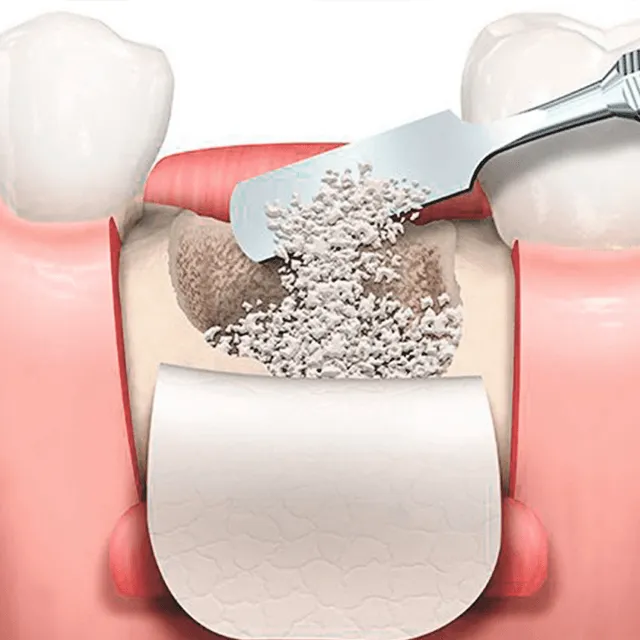
Once the bone graft has been placed, it holds space for your own body to do the repair work. In other words, a dental bone graft is like a scaffold on which your own bone tissue can grow and regenerate.
In some cases, your dental provider may combine a dental bone graft with platelet-rich plasma (PRP). This is taken from a sample of your own blood and is used to promote healing and tissue regeneration.

*Prices can vary without notice.
The patient understands that every medical procedure comes with an inherent risk, any complication during the surgery may generate additional costs.
Following a dental bone graft, you may have pain, swelling and bruising. These are normal side effects that should diminish in a few days. Symptoms can be managed with pain relievers. Your dentist may give you antibiotics as well.
You might notice small fragments of bone coming out of the site over the first few days. These pieces often resemble grains of salt or sand. This usually isn’t a cause for concern, but call your dentist to make sure that you’re healing as expected.
Disclaimer: This information does not reflect the medical advice from our clinics. All cases are different and this treatment may not suit you. Always refer to a medical professional with the certification and experience. All of our physicians are fully qualified to perform these procedures. For more information and diagnosis contact one of our top specialized clinics.
In all medical procedures, there are chances of complications, the specialist will provide you detailed information about the risks of the procedure, talk to the specialist directly.